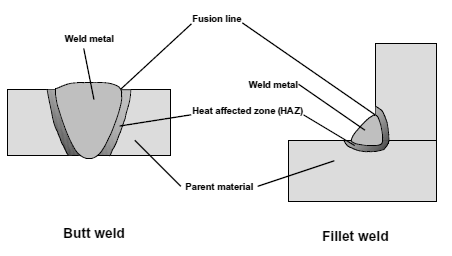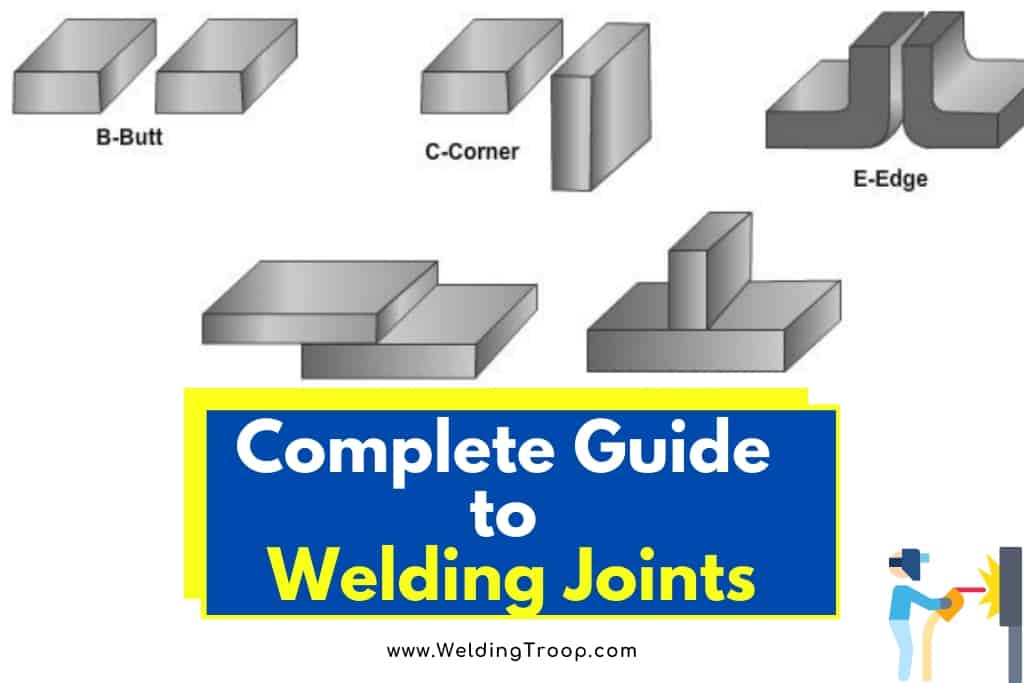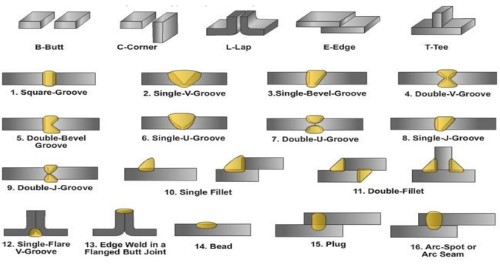How Do You Decide Which Weld Joint to Use
Before you power up your machine and pick up your electrode holder learn more about each of these. Tee welding joints are formed when two members intersect at a 90 angle which makes the edges come together in the center of a plate or component.

Top 5 Types Of Welding Joints Cruxweld
1 give the position for which the electrode can be used.

. When selecting the size of fillet weld for plate or pipe to achieve full strength weld apply below rules for fillet weld leg length. 1 roll or expand with grooves milled in tube holes and seal welded or 2 strength welds no grooves required. If it isnt deep enough the joint could lose shape and eventually break.
A full open corner joint is mainly used for producing strong joints. To get a butt joint you take two different plates lay them on the same plane and then you weld together the edges of the plates. Without knowing the details of your joint design it is not possible to provide specific advice.
This is especially if you are welding both sides of the materials. Pipe 3Socket weld elbow 4Fillet weld 5Expansion gap. Base metal thickness shape and joint fit-up.
Some of the types of welds you will find with a butt joint. 25 mm minimum overlap. You want to move as few parts of your body and the welding gun as possible so that everything is steady and flows smoothly.
The lap joint is formed when two pieces are placed on top of each other overlapping each other for a given distance along their edge. The welding position is specified in the electrode name itself ie the second last digit gives the position for example. Half Open Corner Joint.
For example if material thickness. This type of joint is one that gets replaced fairly often due to the increased wear and tear that is put on the corners of different units. In the E7018 electrode the second last digit ie.
Regardless of which type you choose its crucial to use a welding technique. Consider welding 3-inch 75mm thick plates. You should also use thicker pieces for a more durable weld.
Types of welding defects associated with the corner joint are lamellar tearing incomplete penetration porosity slag inclusion etc. Since corner joint welding is so used with sheet metal work all of these weld types are used all the time. When making a tee joint weld your primary consideration is creating deep enough penetration for the intersection to hold.
Similar to tee joints. A few examples include T-joints which require a fillet weld. It is important to pay attention when creating a butt joint as you should only use plates with a thickness between 3 mm and 12 mm.
To minimize the occurrence of these defects a little variation can be applied. Specification and service conditions. There are several factors to consider in welding rod selection.
Proper joint design is based on design specifications outlined in various welding codes or standards used when welding professionally. Compared to a single fillet a T-joint with a double-fillet weld produces maximum joint strength. One or more of the processes are selected for further examination.
Lap joint with a double fillet weld should have a 1 in. Variations such as grooving the welded metal and using an open corner joint instead of a closed corner joint. Full Open Corner Joint.
A general summary of the welding position for electrodes are given below Table 1. Socket weld flange 2. The tee weld joint has fewer variables and uses than the butt weld joint because it doesnt create a groove.
We can help you with welding process selection in four easy steps. Minimum size of Leg length of fillet shall be 34 or 07 of the material thickness. Tee Joints are considered a type of fillet weld and can also be made when a pipe or tube is welded onto a base plate.
If you want to use this type of joint you will need to use two pieces of metal and join them at a right angle to each other so that it forms a corner. Evaluating Tube-to-Tubesheet Welding Types. Next think of your hand position.
This article throws light upon the seven main factors that influence the selection of joint design. 5 Main Types of Welding Joints Butt Joint. The butt joint can be welded on one side or both sides depending upon the requirements in the drawing or welding symbol.
Extra care is required to ensure effective penetration into the roof of the weld. A butt joint or butt weld is a joint where two pieces of metal are placed together in the same plane and the side of each metal is joined by welding. In assembly of the joint before welding the pipe or tube shall be inserted into the socket to the maximum depth and then withdrawn approximately 116 16 mm away from contact.
The joint requirements are matched with the capabilities of available processes. Design engineers have basically two weld options for a tube-to-tubesheet joint. Welding Sections of Unequal Thicknesses 7.
ASME B311 1998 1273 Preparation for Welding E Socket Weld Assembly says. The butt joint is considered a groove type weld. In most instances we do not see edge preparation done.
A single fillet and shorter overlap may suffice when less strength is required. There are five basic welding joint types commonly used in the industry according to the AWS. Construction of frames boxes various profiles and other shapes is quite demanding and requires thorough knowledge of types of welding joints.
Butt joints requiring a groove weld. Shortest side of the fillet should be equal to the material thickness. Weight of weld metal needed per foot of weld for 3 75mm plate.
Now we can see that the joint with the 20-degree groove angle has the lowest required volume of weld. The joint design determines what type of weld the operator will need to produce to meet the acceptable quality standard. Hi Beatriz the joint design and the number of weld passes needed will depend upon a number of factors including base metal type and thickness the welding process selected joint access the weld metal properties required and cost considerations.
You want to use both hands on the welding gun or use your off-hands wrist to guide your other hand. Each type of joint has advantages and disadvantages. The joint to be welded is analyzed in terms of its requirements.
Electrode Marking or Indentation 6. Here are the numbers showing the weight of weld metal per foot of joint when welding 3-inch thick plate. If you are welding materials heavier than 12 gauges then you should use half-open corner joints.
Do a few practice runs with the welder turned off before beginning to weld.

5 Types Of Welding Joints And Their Use Complete Guide

5 Types Of Welding Joints And Their Use Complete Guide

0 Response to "How Do You Decide Which Weld Joint to Use"
Post a Comment